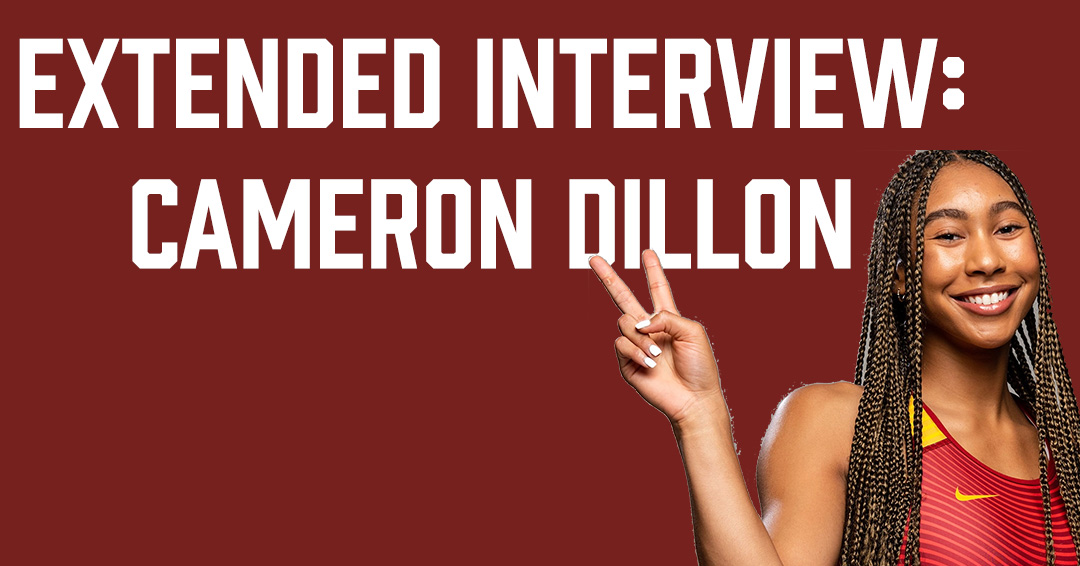It’s a desolate room full of grey folding chairs with one bathroom stall all for about 25 female college athletes. On top of the stall sits a jerry rigged monstrosity of shelving that serves as an equipment room. A shower sits right on top of a locker, soaking an athlete’s belongings for the day. Although this is what’s meant to be a women’s locker room, there is no single label or recognition of such.
Across the way it looks a bit different.
You pass the designated men’s locker room and see their access to the training room, the directors chairs lined across the carpeted floors, and hanging accolades praising all that is men’s sports.
This was Cornell University’s women’s and men’s hockey team locker rooms in 1979. But in 2021, women’s and men’s teams across universities worldwide still aren't treated as equal. From support, exposure, and overall resources, female athletes suffer from the gender disparities that we have seen permeate our society and flood over into the realm of college athletics.
Margaret “Digit” Murphy recalls those first hand locker rooms experiences as a member of Cornell’s hockey team from 1979 to 1983.
“It was absolutely maddening,” Murphy said. “I quickly found that because you're a female, you were not accepted.”

Margaret "Digit" Murphy
At the time, there was no outlet for female athletes to voice grievances.
Even with laws such as Title IX, gender disparities still prevailed and female voices continued to be unheard. Title IX was enacted in 1972 to prohibit sex-based disrimination in schools. The Title IX law provides that no person in the United States shall, on the basis of sex, be excluded from participation in, be denied the benefits of, or be subjected to discrimination under any education program or activity receiving federal financial assistance.
The year the law came into place was also the same year Murphy began fiercely competing in sports.
It was around this same time that the Association for Intercollegiate Athletics for Women (AIAW) formed and gave female athletes one of the biggest advancements at the collegiate level alongside Title IX.
“It was an exciting process and prospect, but it was not universally applauded,” said Carole Oglesby, who established the Association for Intercollegiate Athletics for Women as their first president.
It was around this same time that the Association for Intercollegiate Athletics for Women (AIAW) formed and gave female athletes one of the biggest advancements at the collegiate level alongside Title IX.
With the lack of general support towards the AIAW, it was not a surprise when the AIAW ceased operations in 1981, as the National Collegiate Athletic Association (NCAA) would take control over all women’s athletic programs.
Amidst the conflicting climate of both opportunity and barriers, Murphy began fiercely competing in sports the year Title IX came into place and would soon run into the conflicts herself.
Under the fire
At Cornell, Murphy displayed her grit and tenacity as team captain and became a four-year letter winner for the women's ice hockey team. In 1981, she was named Ivy League Player of the Year and was later inducted into the Cornell Athletic Hall of Fame.
Not only was Murphy a sheer product of Title IX, she would also soon become a Title IX trailblazer.
After her dominating career at Cornell, she went to coach women’s hockey at Brown University from 1990 to 2011.
It was during this time in her career where she was faced head on with Title IX.
Brown University downgraded two women’s teams in 1992 from university funded varsity status to donor-funded varsity status. The volleyball and gymnastics teams lost their university funding, but also lost most of the support and privileges that accompany university-funded varsity status at Brown.
A group of female athletes charged Brown University for violting Title IX with their discrimination against women in the operation of its intercollegiate athletics program.
In 1994, Murphy was testifying in front of a judge on behalf of those female athletes.
“It was sheer hell going through that, being on the side of the women’s athletes,” Murphy said. “I had a choice to make — do I be complicit and just step back and let it all happen or do I step into the ring, put my career on the line, represent an athlete advocate or an institutional advocate?”
Yes, her actions came with backlash and disapproval, but Murphy had no fear in stepping up to the plate. Though it occurred 30 years ago, she set the stage for many female athletes to come, in challenging the NCAA and Title IX.
“The NCAA established these arbitrary ways of executing Title IX on the college campus and they're institutionally based,” Murphy said. “Title IX means opportunity but you're at the hands of ‘Who’s deciding what the opportunity is?’ The law is there to protect the marginalized population but the execution is the real key to how you protect that marginalized population.”
The 37 words of Title IX are meant to embody opportunities, but today we still see the disparities in clear sight within college sports.
In March 2021, University of Oregon’s basketball player, Sedona Prince, documented a viral TikTok that paralleled the experiences of Murphy and her teammates' Cornell.
Prince’s TikTok at the March Madness tournament highlighted the differences in men’s and women’s weight rooms. Prince panned over a single stack of weights and yoga mats placed next to their practice court within a bleak convention room. Meanwhile, the men had the likes of an entire gym: various stations of barbells, squat racks, bench press machines and more laid across the facility.
@sedonerrr it’s 2021 and we are still fighting for bits and pieces of equality. ##ncaa ##inequality ##fightforchange
♬ original sound - Sedona Prince
“It comes down to a very simple statement: it’s just not right,” Murphy said.
Murphy saw history repeat itself 42 years apart.
Prince’s video caption read: “It’s 2021 and we are still fighting for bits and pieces of equality.” The team also received box meals compared to a buffet for the men’s teams and were given gift sets far more scarce compared to their counterparts.
But it's a much larger picture than just weight rooms, boxed meals, and gift sets. The equity is simply not there.
More than a game
In October 2021, the second NCAA gender report showed that the NCAA does spend more on men’s sports than women’s sports and showcases the spending disparities.
“The climate is such that we're recognizing how student athletes have been unfairly restricted,” said Jeff Fellenzer, professor of sports journalism at the University of Southern California. “What the report pointed out is, if you’re not one of those revenue generating sports — which came down to most all women’s sports — you’re kind of just fighting for crumbs.”
The NCAA Division I men's basketball championship budget for the 2018-19 season was $28 million— almost twice as much as the women's budget. The spending also relates to how much is being put into overall exposure as far as support, resources, and advertisement.
In the 2018-2019 season, the men generated $917.8 million, including media and ticket revenue, while the women generated $15.1 million, also including media and ticket revenue. Total attendance relates to some of the disparity, as the men's basketball tournament had 690,000 fans, while the women's tournament had 275,000 fans.

Media is a big factor of how we view and value sports, so it speaks volumes as to why the media and fans are not nearly as present for female athletes as they are for male athletes.
In a study done by researchers at the University of Southern California and Purdue University, it found that 95% of total television coverage focused on men's sports in 2019. This includes ESPN sports highlights, social media posts, and online sports newsletter coverage.

The differing numbers in fan base can be a reflection of the lack of care and support the general public has towards women's sports alone.
The law firm, Kaplan Hecker & Fink, found that the NCAA spent $4,285 per men's participant versus $2,588 per women's participant, and even greater disparity in single-gender sports like wrestling, beach volleyball, or rowing.

“The information isn’t really shocking but I feel like it's still unfair,” said Cameron Dillon, a 2021 alum from USC’s women’s rowing team. “A lot of female student athletes fall between the cracks and it goes far beyond the financial politics of sports.”
From differential treatment to exposure and resources, sports can be seen as a reflection of the society we live in. It reflects the biases and discrimination against women in all fields.
Basic resources are needed to perform at the best level and having the bare minimum can create detrimental impacts for female athletes not only financially, but also emotionally or physically.
“I blame that on the institutions because their job is to create a safe space for student athletes and coaches,” Murphy said. “They don't give women coaches a safe space; they do not give minority coaches a safe space to really air their grievances.”
Dillon draws back to her experiences in the program. Her and her teammates would put in 20-40 hours a week towards the sport, but she recalls the differentiating factors between the men’s and women's teams: lower access to physical therapy trainers, less meal plans throughout the day, less scholarship availability, along with the academic requirement to achieve higher team GPA.

“As far as the mental and physical effects, with women, our bodies are constantly put on a pedestal,” Dillon said. “There’s weight fluctuations for weighing in everyday but then we’re still juggling external pressure of meetings, homework, tutoring, practices, games, community service, all while trying to maintain relationships. It takes a lot and we don't have as many resources as football and basketball teams receive because the fundings not there.”
Breaking the cycle
When the NCAA put the AIAW out of business in 1983, they made promises about how the program for women would be better under their program. So, when furor emerged particularly over the March Madness Tournament, pressure came on to the NCAA to make changes.
“The NCAA made it appear like it was a good step for collegiate women to move away from the AIAW to the NCAA,” said Oglesby. “But did they really create a better environment? It looked like no, they didn’t.”
In this current state of media — as seen with Sedona Prince’s TikTok — institutions including the NCAA are being held accountable now more than ever.
The gender report included ways in which the NCAA can, and should, reform.
As the report stated, many of the issues identified and some of the recommendations put forward are not new. It is clear that efforts to resolve gender equity issues in the NCAA have percolated at various times over the past 20 years or more.
Among several ideas, Kaplan Hecker & Fink suggested getting rid of gender modifiers on branding tournaments, improving the structure of overall gender equity oversight by increasing the number of senior staff, and a real-time gender equity audit of the Division I Men’s and Women’s Basketball Championships as they are being planned and executed each year.
“There’s still work to be done in these institutions,” said Dillon. “It goes beyond just funding or playing male sports more on networks. All of this has a bigger picture for women’s sports.”
Though this issue directly impacts female athletes, men play just as important a role in achieving equality within the NCAA and across all levels of play. If it isn't going to be pushed by the NCAA, it can be done by the athletes themselves, with both genders at the table.
“It’s important for guys to advocate and be the biggest fans for the women's side,”said Elijah Olaniyi, member of the men’s basketball team at Stony Brook University. “Then, I feel like the rest of the world will follow along.”
With men holding much of the money, power, and influence in these institutions, creating allies also comes with educating them. Education and empowerment come key in advancing inclusion and equity. Many organizations have surfaced over the years to do so, with women emerging in the leadership roles to demand change themselves.
Oglesby began as a pioneer of women’s sport after creating the Association for Intercollegiate Athletics for Women, but she is still part of the advocacy decades later.
Oglesby holds major leadership positions in organizations like International Working Group for Women and Sport, Women’s Sports Foundation, WomenSport International.

International Working Group for Women and Sport

Women's Sports Foundation

WomenSport International

Play it Forward
Sport is offered as a system of organizations. It can make impacts beyond a single individual.
Murphy followed the lead of powerful women in sports history, like Oglesby, by creating a non-profit organization of her own.
In 2017, she started Play It Forward. The organization's primary objective is to create and advance more opportunities for women as athletes and leaders in sports. Play It Forward educates the population on having a women’s voice in sport whether that be equity for players or simply watching women play.
“My hope is that the future generation of women learn from the past and do the hard work to really get true equity,” Murphy said. “We have to break the cycle.”


